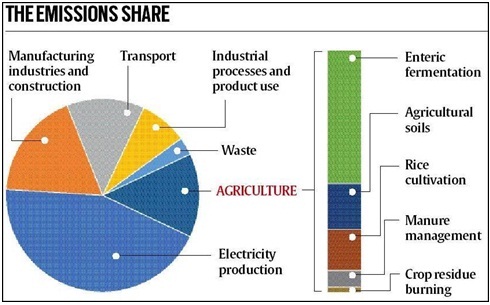7667766266
enquiry@shankarias.in
Although the share of agriculture in India’s total emissions has gradually declined, it has increased in absolute terms to a level similar to China’s in absolute terms emissions.

What is the need for a carbon policy for agriculture?
Source: The Indian Express